i9600 Series Writers
User’s
Guide
A-61058
Part No. 3E9011
CAT No. 134 1759
Important Safety and Regulatory Information
IMPORTANT: Equipment shall be installed by qualified personnel.
WARNING: TO PREVENT FIRE OR SHOCK HAZARD, DO NOT EXPOSE UNIT TO RAIN OR MOISTURE.
TO PREVENT POSSIBILITY OF INJURY OR DAMAGE TO THE UNIT, DO NOT OPERATE
WITH ANY COVERS OR PANELS REMOVED.
The exclamation point within an equilateral triangle is intended to alert the user
to the presence of important operating and maintenance (servicing) instructions
in the literature accompanying the appliance.
Le point d’ exclamation dans un triangle équilatéral avertit l’utilisateur de la
présence d’instrucions importantes de fonctionnement et de maintenance
(entretien) dans la brochure accompagnant l’appareil.
Das Ausrufezeichen in einem gleichseitigen Dreieck weist den Benutzer in der
Dokumentation auf wichige Bedienungs- und Wartungsanweisungen in Bezug
auf das Gerät hin.
Il punto esclamativo all’interno del triangolo equilatero avverte della presenze di
importnati istruzioni per il funzionamento e la manutenzione contenute nella
documentazione allegata al dispositivo.
El signo de exclamación dentro del triángulo equilátero pretende alertar al
usuario ecerca de la existencia de importantes instrucciones de operación y
matenimiento (servicio) en la documentación que acompaa al producto.
User Precautions
Users and their employer need to observe the common sense precautions applicable to the operation of any
machinery. These include, but are not limited to, the following:
• Do not wear loose clothing, unbuttoned sleeves, etc.
• Do not wear loose jewelry, bracelets, bulky rings, long necklaces, etc.
• Hair length should be kept short, using a hair net if needed, or tying long hair up in a bundle.
• Remove all other loose objects from the area that could be drawn into the machine.
• Take sufficient breaks to maintain mental alertness.
Supervisors should review their practices and make compliance with these precautions a part of the job description
for operation of the Kodak i9600 Series Writers or any mechanical device.
ElectroMagnetic Compatibility Statements
For the United States
This equipment has been tested and found to comply with the limits for a Class A digital device, pursuant to part
15 of the FCC rules. These limits are designed to provide reasonable protection against harmful interference when
the equipment is operated in a commercial environment. This equipment generates, uses and can radiate radio
frequency energy and, if not installed and used in accordance with the instruction manual, may cause harmful
interference to radio communications. Operation of this equipment in a residential area is likely to cause harmful
interference in which case the user will be required to correct the interference at their own expense.
A-61058 January 2003 i
For Japan
This is a Class A product based on the standard of the Voluntary Control Council for Interference by Information
Technology Equipment (VCCI). If this equipment is used in a domestic environment, radio disturbance may arise.
When such trouble occurs, the user may be required to take corrective action.
Taiwan
WARNING: This is a Class A product. In a domestic environment this product may cause radio interference in
which case the user may be required to take adequate measures.
IMPORTANT:
Compliance with regulations governing radio frequency emissions requires that the installation of your Kodak
i9600 Series Writer use the shielded data cable provided. Any data cable the user may choose to substitute also
must be shielded to assure continued compliance.
Environmental Information
• The Kodak i9600 Series Writers are designed to meet worldwide environmental requirements.
• Guidelines are available for the disposal of consumable items that are replaced during maintenance or
service; follow local regulations or contact Kodak locally for more information.
• The Kodak i9600 Series Writers contain lead in the solder on the circuit boards. Lead is considered a
hazardous waste and proper disposal procedures should be followed. Also the film cassette and 100 printed
circuit board contain lithium batteries. For disposal or recycling information, contact your local authorities (or
the Electronics Industry Alliance; www.eiae.org).
• The product packaging is recyclable.
• Parts are designed for reuse or recycling.
Acoustic Noise
Acoustic Noise Level (sound power levels [Lwa])
Operating Status Noise Level dB (A)
Standby 33 db (A)
Operating 50 dB (A)
NOTE: All data measured in accordance with DIN 45 635, ANSI S12.10-1985, and ISO 7779 in a hemi-anechoic
chamber.
ii A-61058 January 2003
Safety, Regulatory Conformance and Certifications
The Kodak i9600 Series Writers conform to all applicable national and international product safety and electronic
emission regulatory requirements. This includes, but is not limited to, the following:
• UL-1950 3rd Edition
• CUL (CSA 22.2 No. 950 3rd Edition, UL-1950 3rd Edition)
• TUV / GS Mark EN 60950 with A1, A2, A3, A4, A11
• C – Tick Mark
• EN 55024 ITE Immunity
• EN 55022 ITE Emissions, Class B
• US - CFR47, part 15, FCC Class A
• Canada - ICES 003, Issue 3, Class A
• Japan - VCCI Class A
• Taiwan - CNS 13438 Class A
• Australia / New Zealand - AS/NZ 3548 Class A
• CE Mark
• Certifying Body Certificate
Getting Technical Support
If you experience problems with your system, contact the Integrator or Kodak Response Center at one of the
following telephone numbers:
Within New York State: 1-800-462-6494
Outside New York State: 1-800-822-1414
Alaska and Hawaii: 1-800-466-1414
For other countries, contact your local Kodak Service Support Center.
When contacting Technical Support, be prepared to supply the following information:
• The names and models of the computer and the i9600 Series Writer you are using.
• Any memory-resident software installed, including memory managers, with version numbers.
• Any resident anti-virus software.
• Contents of the error log file.
• Any information and the action taken that can reproduce the problem you experienced. Include the exact
text of any error messages you received.
A-61058 January 2003 iii
Table of Contents
1 Introduction.......................................................................1-1
Features ..............................................................................1-1
System overview.................................................................1-2
Views...................................................................................1-3
Status/message display......................................................1-4
2 Getting Started .................................................................2-1
Powering up and initializing the Writer................................2-1
Archive Storage media cassettes .......................................2-2
Loading media into a cassette ............................................2-4
Loading cassette(s) into the Writer.....................................2-9
Updating the cassette memory...........................................2-10
Replacing the media cassette battery ................................2-11
3 Operating the Writer ........................................................3-1
Before you begin .................................................................3-1
Operating icons ...................................................................3-1
Available functionality ..........................................................3-2
On-line mode...............................................................3-2
Off-line mode...............................................................3-3
Using the functions..............................................................3-4
On-line/off-line.....................................................................3-4
Advancing the film by a fixed amount ..........................3-4
Making a leader............................................................3-6
Tensioning the film .......................................................3-7
Running the film to the end..........................................3-10
Viewing error messages .....................................................3-12
Setting the audible alarm.....................................................3-14
Setting the contrast.............................................................3-16
Diagnostics .........................................................................3-18
Powering down....................................................................3-18
4 Troubleshooting ...............................................................4-1
Error messages ..................................................................4-1
Problem solving chart .........................................................4-8
iv A-61058 January 2003
1 Introduction
The Kodak i9600 Series Writers provide the capability of writing
digital images to archive media. Image files are accepted from a
host system, decompressed, composed along with image marks
and optional frame annotation, and converted to analog format.
The resulting images are written to Kodak Reference Archive
Media.
Two models are available:
• Kodak i9610 Writer: writes at 4800 scan lines per second.
• Kodak i9620 Writer: writes at 9600 scan lines per second.
Features Kodak i9600 Series Writers provide the following:
• Quick and easy filming
• Filming of bi-tonal digital images for long-term archival storage
• Accepts standard TIFF images (Tagged Image File Format)*
• Accepts Group III, Group III 2-dimensional, Group IV, and JBIG
compression types
• Scales images from 20:1 to 60:1 reduction ratio
• Writes one or two rolls concurrently
• Accepts mixed image sizes
• Films in simplex, duplex, and 2-up formats
• Provides image marks and frame annotations
• Assigns image addresses for image indexing
• Provides audible and visual alarms
• Provides the ability to make a film leader
• Allows for manual film advance or run-to-end of film
• Displays the film remaining in one or both storage media
cassettes
• Indicates the device is busy (image being filmed) or idle
• Intelligent energy control — after a period of no use, the Writer
can automatically switch to an idle state. The actual power
consumed drops to less than 5% full power
* Does not accept tiled and multi -stripped images .
A-61058 January 2003 1-1
System overview The Kodak i9600 Series Writers rapidly convert digital image
documents to human-readable images on archive media for long-
term storage and access.
The Writer and its associated components (Reference Archive
Capture Subsystem) are listed below:
§ Kodak i9600 Series Writer.
§ The application software simplifies integration with digital
document systems.
§ Customer-provided, network-ready host PC.
§ Kodak Imagelink Smart Cassette 100 or 215 provides easy
loading of Kodak Reference Archive Media.
§ Kodak Reference Archive Media is a 16 mm microfilm
specially optimized for the i9600 Series Writer. The standard
215-foot roll length provides an uninterrupted and unattended
writing session. The Kodak Reference Archive Media provides
AIIM/ANSI-compliant image storage that meets archival
standards. Stored images can be accessed by automated
retrieval devices, including the Kodak i7300 Scanner, Kodak
Digital Science Intelligent Microimage Scanner and Kodak
Imagelink Digital Workstation 2000, and scanned for electronic
delivery back to your digital document system.
1-2 A-61058 January 2003
Views The front and rear views shown below illustrate exterior
components of the Writer:
Front View
StSattautuss/
mdeispslayge
display
OOppeerraattiinngg
buktteoyns
Door
latch
FCroansts deototer
access
door
Rear View
COM1 and COM2 Power cord
ports are for outlet
Kodak Service
personnel only Power
switch
Ethernet port
A-61058 January 2003 1-3
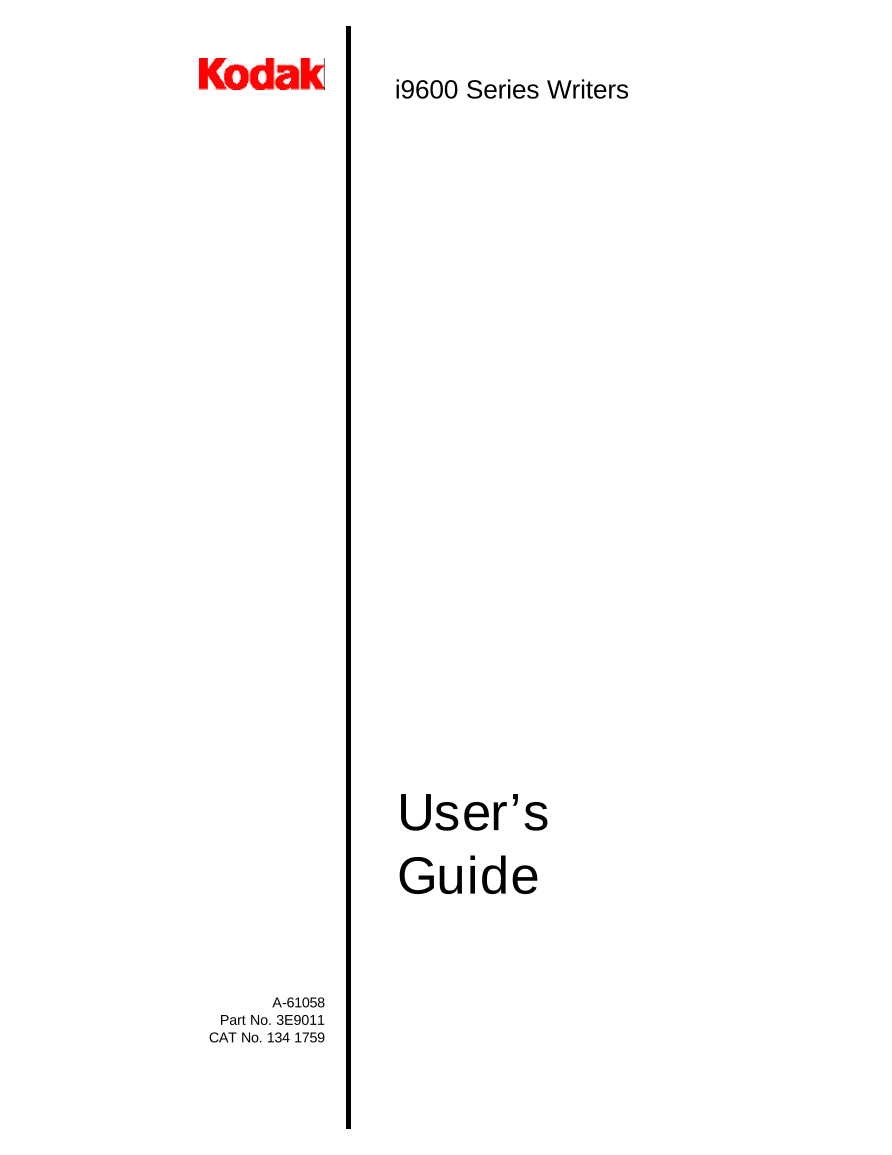
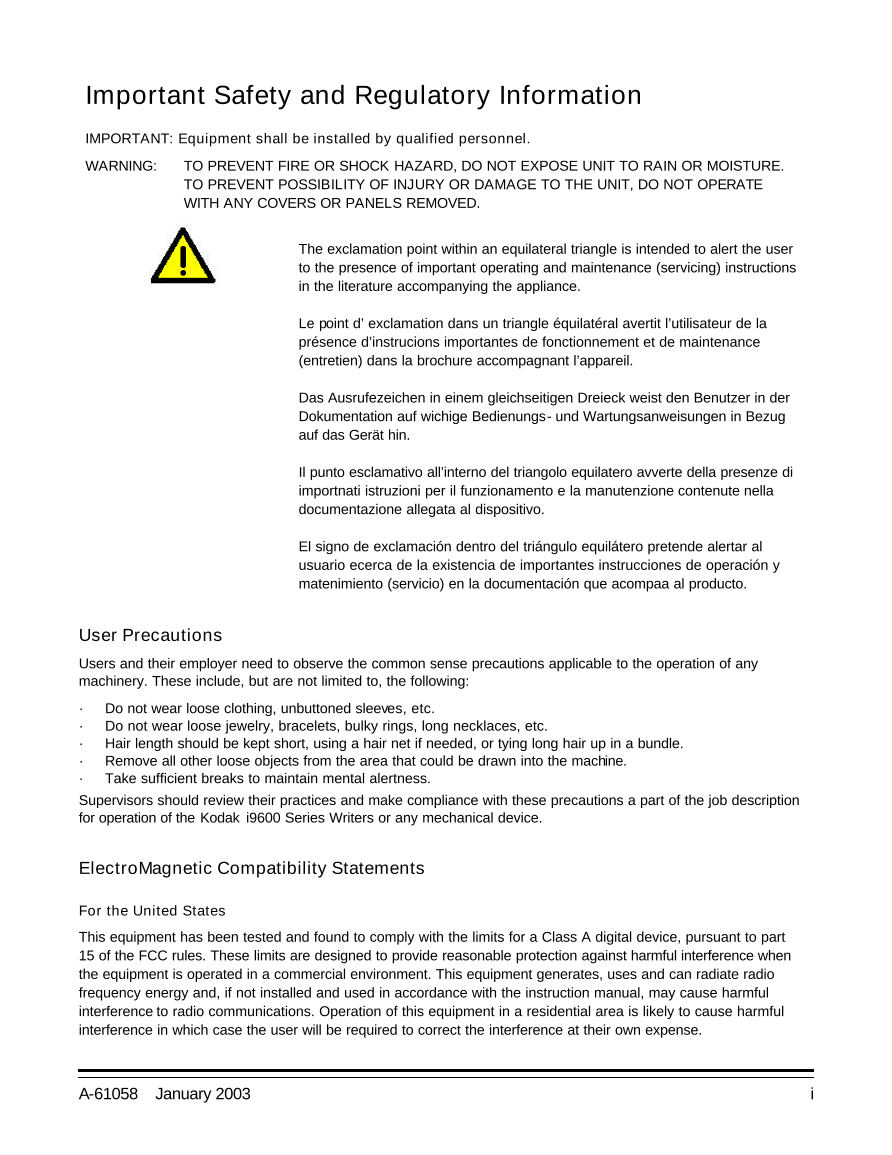
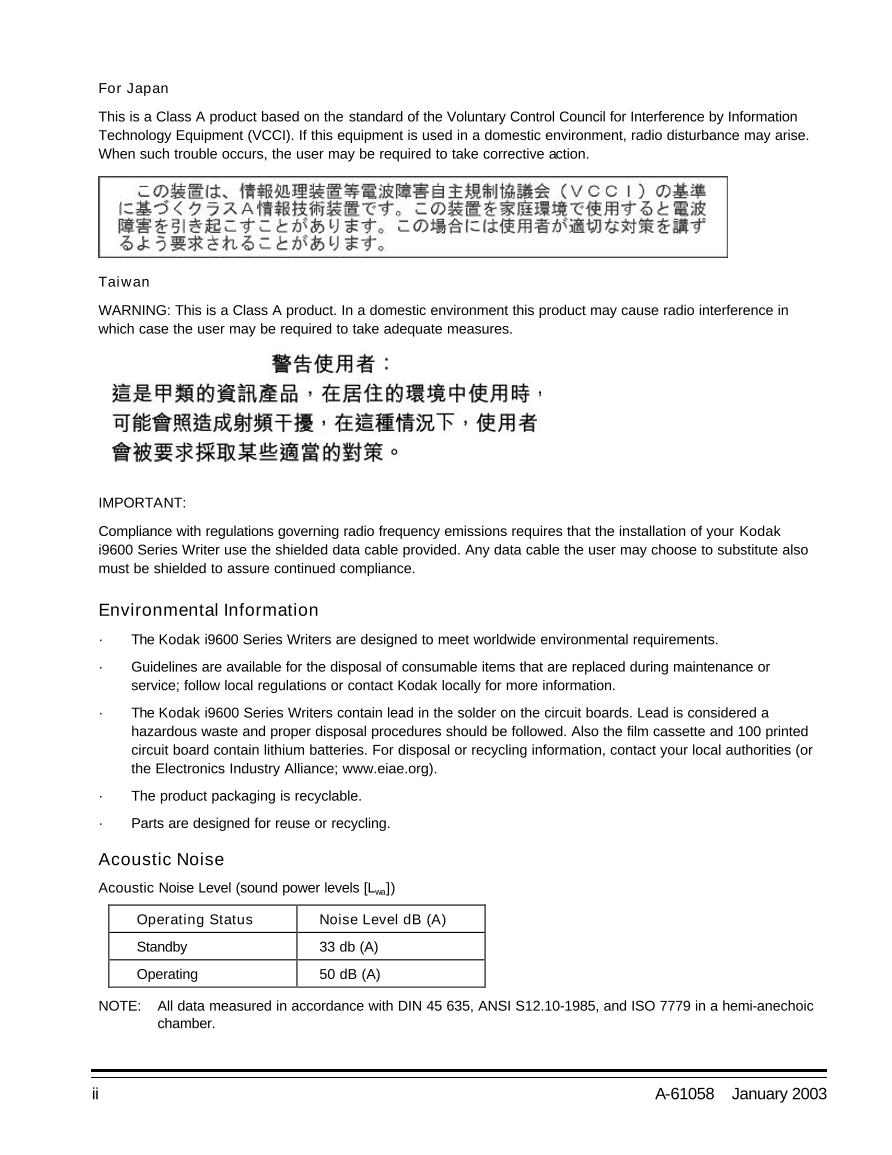

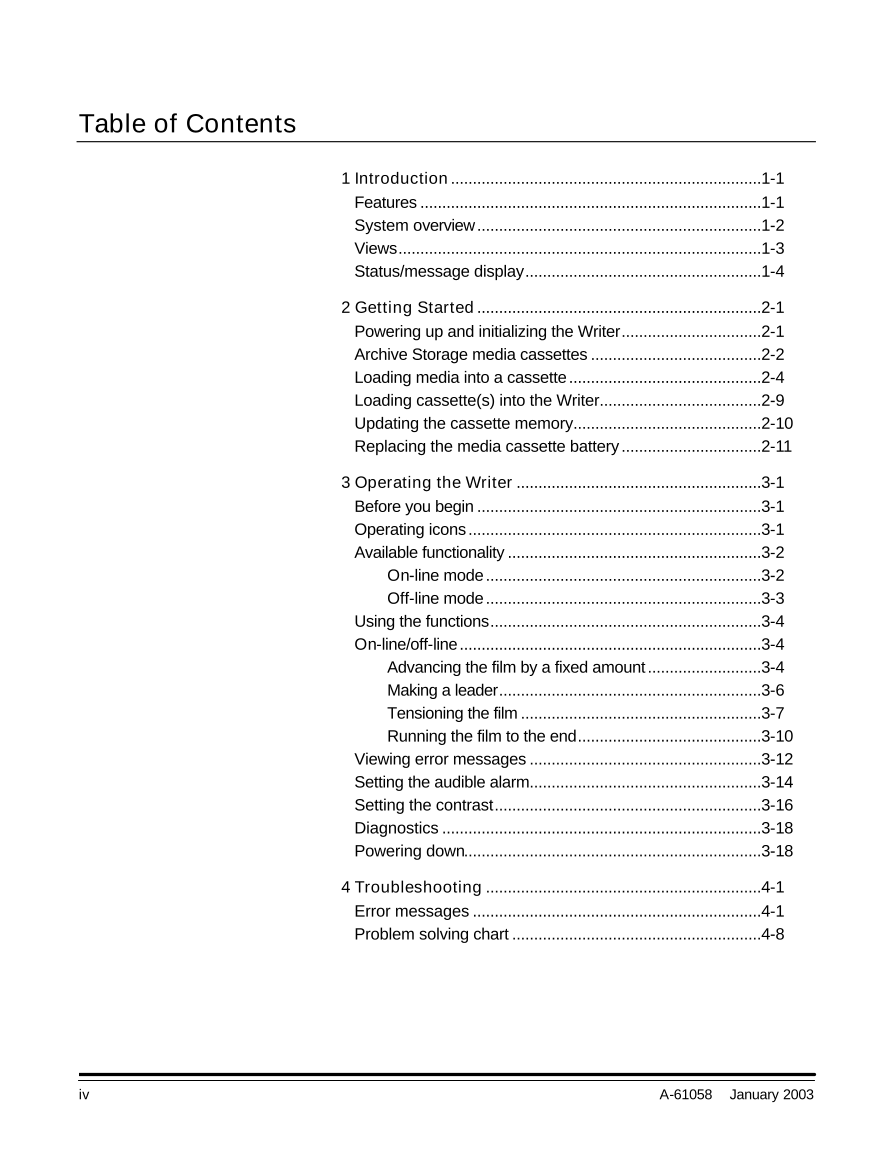
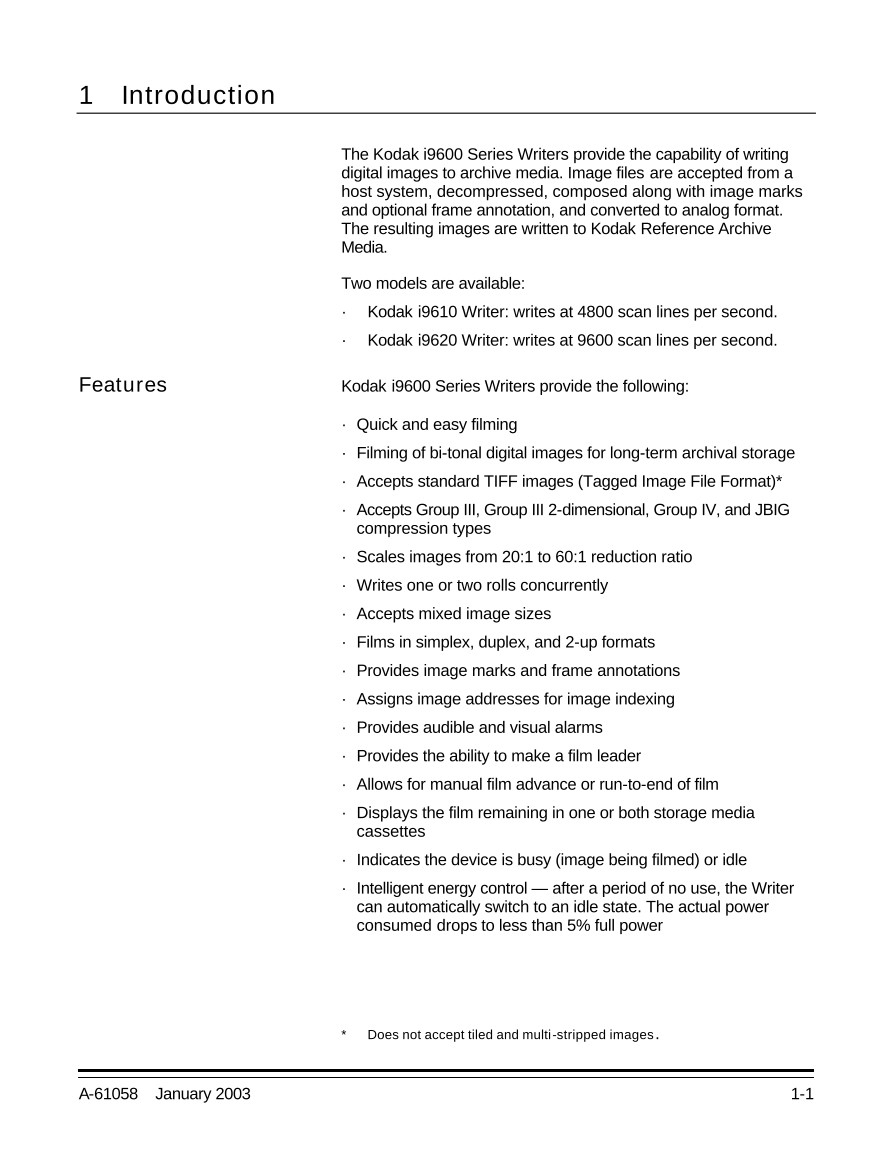
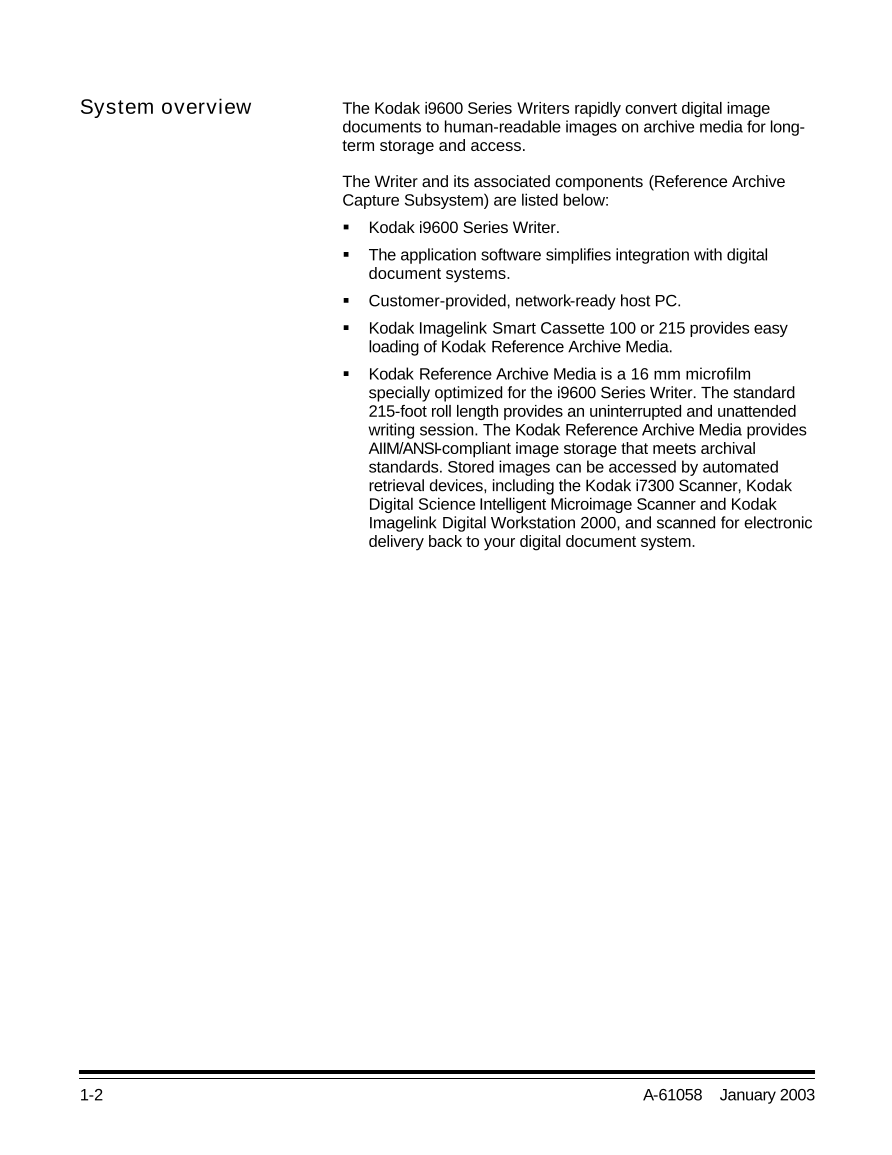
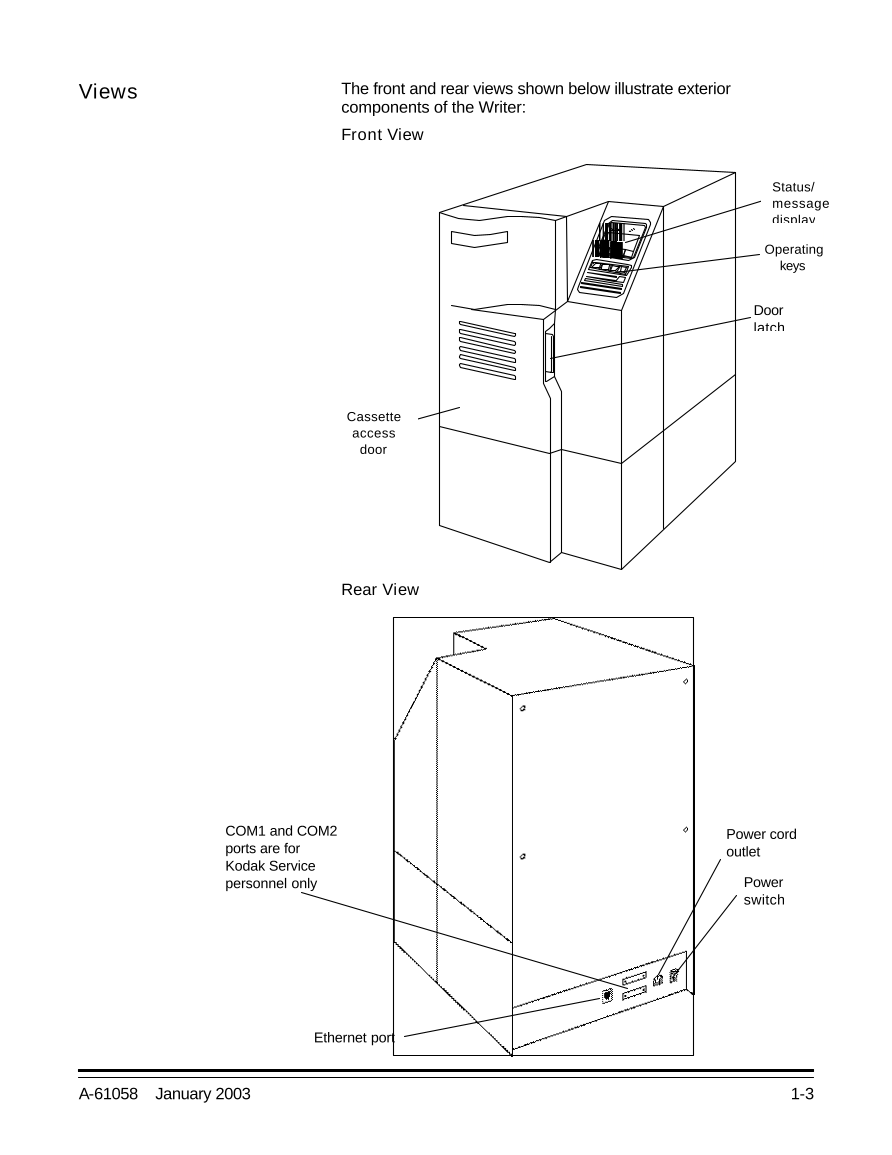








 V2版本原理图(Capacitive-Fingerprint-Reader-Schematic_V2).pdf
V2版本原理图(Capacitive-Fingerprint-Reader-Schematic_V2).pdf 摄像头工作原理.doc
摄像头工作原理.doc VL53L0X简要说明(En.FLVL53L00216).pdf
VL53L0X简要说明(En.FLVL53L00216).pdf 原理图(DVK720-Schematic).pdf
原理图(DVK720-Schematic).pdf 原理图(Pico-Clock-Green-Schdoc).pdf
原理图(Pico-Clock-Green-Schdoc).pdf 原理图(RS485-CAN-HAT-B-schematic).pdf
原理图(RS485-CAN-HAT-B-schematic).pdf File:SIM7500_SIM7600_SIM7800 Series_SSL_Application Note_V2.00.pdf
File:SIM7500_SIM7600_SIM7800 Series_SSL_Application Note_V2.00.pdf ADS1263(Ads1262).pdf
ADS1263(Ads1262).pdf 原理图(Open429Z-D-Schematic).pdf
原理图(Open429Z-D-Schematic).pdf 用户手册(Capacitive_Fingerprint_Reader_User_Manual_CN).pdf
用户手册(Capacitive_Fingerprint_Reader_User_Manual_CN).pdf CY7C68013A(英文版)(CY7C68013A).pdf
CY7C68013A(英文版)(CY7C68013A).pdf TechnicalReference_Dem.pdf
TechnicalReference_Dem.pdf